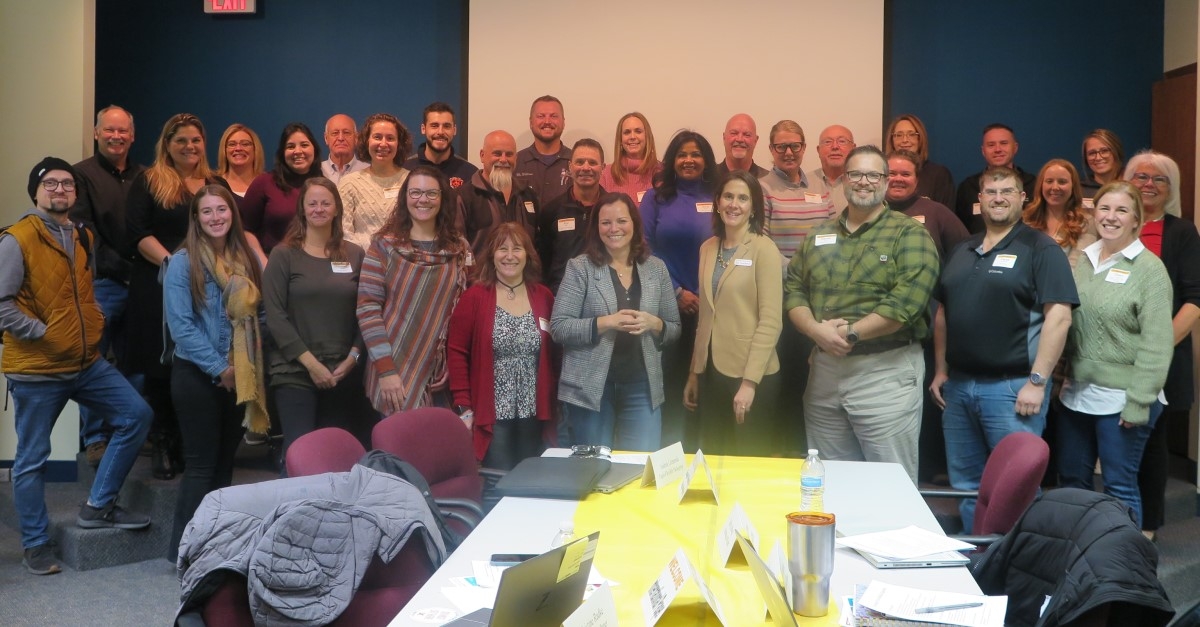Manufacturing is growing rapidly. So is the number of young adults exploring alternative options to a four-year college degree. How do these fields of growth correlate? GCAMP hopes the more we can offer manufacturing as a career option to students, the more young people will want to fulfill the demands of a burgeoning industry.
In order to encourage this funnel, GCAMP and VALEES partner to support students looking into manufacturing. In November of 2022, Cassie Blickem, Director of VALEES (Valley Education for Employment System), spoke at GCAMP’s Workforce Strategies Forum regarding internships. At the forum, manufacturers, educators, and individuals working in the community development sector all came together to learn about taking the steps necessary to be “Intern Ready.”
Blickem defined plainly the most important pieces for companies to consider when evaluating or creating an Internship Plan: a Job Description, Orientation Plan, and Organizational Chart.
Employers should have a job description to ensure both students and manufacturers are on the same page about expectations before an intern shows up for their first day. Having a clear job description helps eliminate any confusions and prevent any frustrations. Included in this job description could also be learning objectives, daily tasks, projects, and goals.
Equally important is having a well-defined orientation plan. Blickem suggested mapping out every step as clearly as possible; what may seem obvious to seasoned workers may not be obvious to a teenager who has never held a job before. Notes about expected dress attire, where to park, and who to speak to upon arriving are all discussion points that are better to go “overboard” on than to just expect an intern to figure out on their own.
Lastly, an organizational chart helps clear up any potential points of confusion for both manufacturers and interns. By providing interns with the names, job titles, and contact information for company employees, it can save headaches for both company and intern by making it obvious who an intern should speak to regarding different matters, or in the case their supervisor is otherwise occupied.
Another exciting key takeaway from Blickem’s presentation was the required age for internships. A student must only be 16 years or older to be eligible for an internship. Hire younger students; help students hone their skills and find their paths early on, while also establishing and building loyalty to the hiring company.
Another avenue for companies who are new to internships to pursue is that of the Illinois Internship Micro Credential. While it is not required to host an intern, some companies find it helpful in mapping out their internships.
While seemingly a lot of information, hiring an intern is truly a simple process. Once companies define their Job Description, Orientation Plan, and Organizational Chart, the only other step companies need to take is pushing out their internship to students. GCAMP and VALEES are happy to help companies with these steps.
Interested in bettering your internship program, or creating a new one? Reach out to Dawn Curran dcurran@gcamp.org or Cassie Blickem cblickem@waubonsee.edu for information on getting started.
Get your micro credential: https://www.learningdesigned.org/content/internship-resources
Hire students 16+ legal specifications: https://www.law.cornell.edu/cfr/text/29/520.300#:~:text=Except%20in%20extraordinary%20circumstances%2C%20an,during%20the%20past%20three%20years.
Presentation Document:
11/18/2022 Intern Ready! (edsystemsniu.org)


